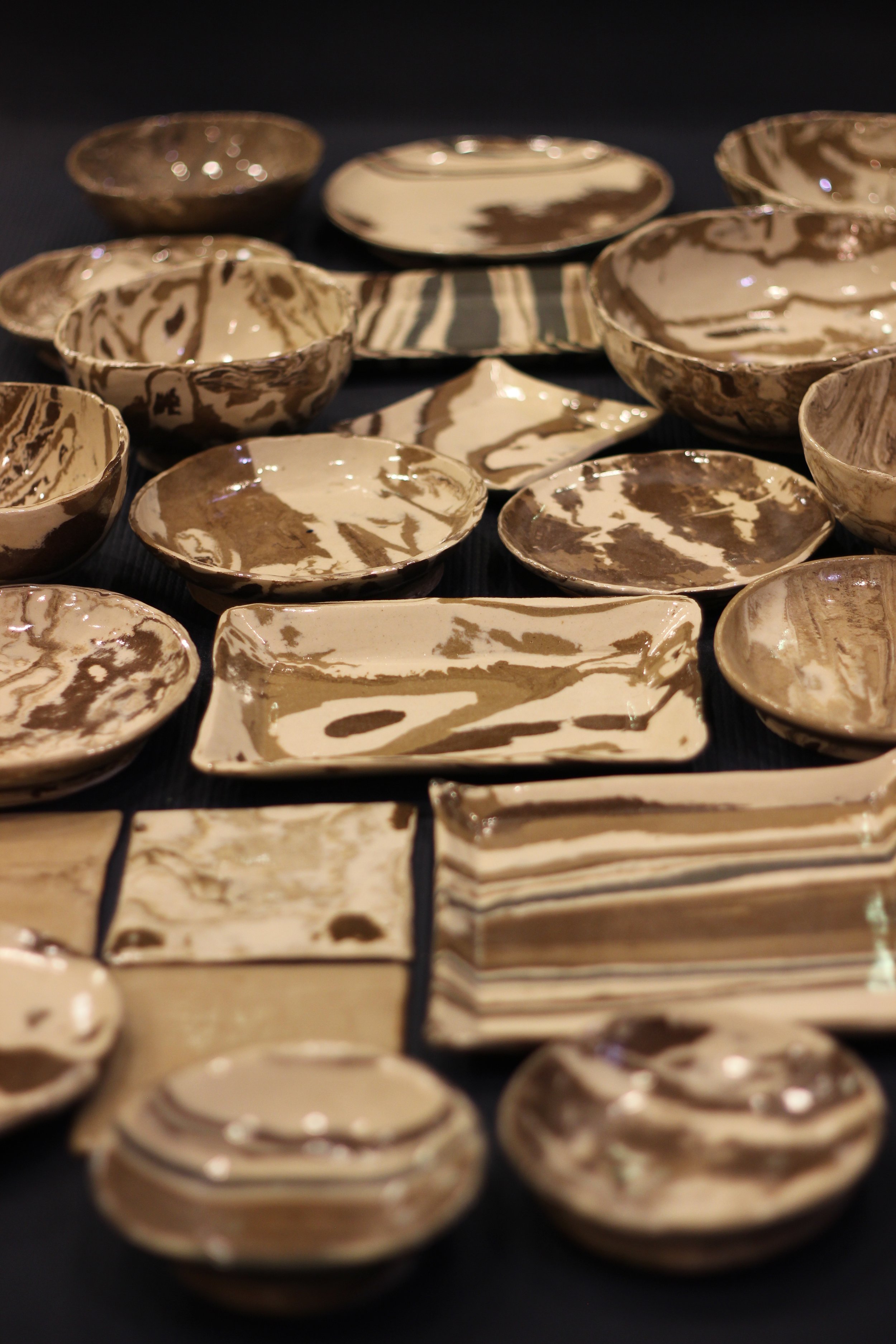About Nerikomi
Embarking on a voyage through the delicate interplay of tradition and innovation, we explore the enchanting history of Nerikomi, a ceramic technique deeply rooted in Japanese cultural heritage. This exploration not only unveils the evolution of Nerikomi from ancient practices to modern artistry but also underscores the importance of cultural respect in preserving the essence of this time-honored craft. The mosaic of colored clays in ceramics finds its ancient roots woven across diverse civilizations, with Japan contributing a significant chapter to this narrative. Techniques such as mishima and hakeme laid the groundwork, employing slip for decorative nuances, providing a backdrop for the emergence of the intricate artistry that defines Nerikomi.
During the Momoyama period (late 16th to early 17th century) in Japan, Nerikomi blossomed as an artistic response to the burgeoning popularity of tea ceremonies. Potters, guided by a deep cultural understanding, responded with ingenuity by experimenting with diverse clays and colors, birthing the elaborate patterns and vibrant designs that embody the essence of Japanese aesthetics. The Echizen region, with its rich cultural tapestry, played a pivotal role in shaping Nerikomi. Echizen ware, celebrated for its distinctive multicolored designs, became a source of inspiration for Nerikomi artists. Potters in this region, guided by a profound respect for their cultural heritage, skillfully blended various clays, contributing to the visual opulence of Nerikomi and solidifying its place in Japanese ceramic traditions.
In the 20th century, a global renaissance of interest in traditional crafts breathed new life into Nerikomi. Artists and potters, cognizant of the cultural significance embedded in this technique, explored and adapted it, infusing contemporary aesthetics with an unwavering respect for the craft's Japanese roots. This revival reflects not only a celebration of artistic ingenuity but also a commitment to preserving and respecting cultural heritage.
Nerikomi, with its intricate history and contemporary resurgence, stands as a testament to the enduring power of artistic expression when approached with cultural respect. As we traverse through its origins in ancient Japan to its current global recognition, Nerikomi becomes a harmonious bridge, connecting the past with the present, and reinforcing the importance of cherishing and respecting the cultural context from which this timeless craft emerged.
